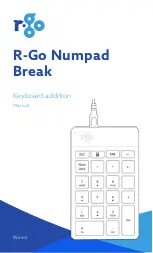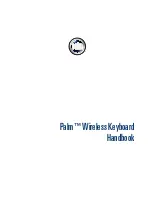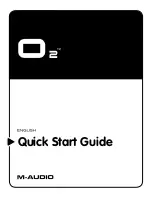
PROG P0: Play 0–7: Tone Adjust
9
Pitch EG Sustain Level
(N/A).
(–99...+99)
This scales the sustain levels of the Pitch EG.
Pitch EG Release Time
.
(–99...+99)
This scales the release times of the Pitch EG.
Pitch LFO1 Intensity
.
(–99...+99, CC#77)
This scales the effect of LFO1 on the Pitch.
–99
removes the LFO modulation entirely.
+99
means
maximum modulation in the same direction, positive or
negative, as the original Program.
LFO1 Speed
.
(–99...+99, CC#76)
This scales LFO1’s frequency. When the LFO is in MIDI/
Tempo mode, this adjusts the Base Note. For more
information, please see “Freq (Frequency)” on page 48.
LFO1 Fade
.
(–99...+99)
This scales LFO1’s fade-in time. For more information,
please see “Fade” on page 49.
LFO1 Delay
.
(–99...+99, CC#78)
This scales LFO1’s delay time - the time between note-on
and the onset of the LFO. For more information, please see
“Delay” on page 49.
This parameter interacts with CC# 78.
LFO1 Stop
.
(PROG/Off/On, Absolute)
This
Absolute
parameter controls whether LFO1 is stopped
or running. For more information, please see “Stop” on
page 48.
The
PROG
setting restores the Program’s original values.
For example, if you set this to PROG when the oscillator 1
LFO is stopped and oscillator 2 is playing, the original
setting of the parameter will be used.
LFO2 Speed
.
(–99...+99)
This scales LFO2’s frequency. When the LFO is in MIDI/
Tempo mode, this adjusts the Base Note. For more
information, please see “Freq (Frequency)” on page 48.
LFO2 Fade
.
(–99...+99)
This scales LFO2’s fade-in time. For more information,
please see “Fade” on page 49.
LFO2 Delay
.
(–99...+99)
This scales LFO2’s delay time - the time between note-on
and the onset of the LFO. For more information, please see
“Delay” on page 49.
LFO2 Stop
.
(PROG/Off/On, Absolute)
This
Absolute
parameter controls whether LFO2 is stopped
or running. For more information, please see “Stop” on
page 48.
Common LFO Speed
.
(–99...+99)
This scales the Common LFO’s frequency. When the LFO is
in MIDI/Tempo mode, this adjusts the Base Note.
Unison
.
(Off/On, Absolute)
This
Absolute
parameter turns
Unison
on and off. For more
information, please see “Unison” on page 16.
Number Of Voices
.
(2...6, Absolute)
This
Absolute
parameter sets the number of Unison voices.
If
Unison
is not
On
, this parameter has no effect. For more
information, please see “Number of Voices” on page 16.
Detune
.
(00...99, Absolute)
This
Absolute
parameter sets the amount of detuning
between the Unison voices. If
Unison
is not
On
, this
parameter has no effect. For more information, please see
“Detune” on page 16.
Thickness
.
(Off/01...09, Absolute)
This
Absolute
parameter sets the pattern of detuning
between the Unison voices. If
Unison
is not
On
, or if
Detune
is set to
0
, this parameter has no effect. For more
information, please see “Thickness” on page 16.
Tone Adjust Parameters
Macro parameters
The following three parameters affect both Oscillator 1 and
Oscillator 2.
Note:
In the list below, at the right of each parameter, the
value range and edit type are shown in parentheses.
Pitch Stretch
.
(–12...+12, Relative)
This special control increases the Oscillator
Tune
parameter
while lowering the
Transpose
parameter. The result is that
the pitch stays the same, but the mapping of the samples to
the keys changes. You can use this to create interesting shifts
in timbre.
Hold
.
(Off/On, Absolute)
This lets you turn Hold on and off. For more information,
please see “Hold” on page 17.
Reverse
.
(PROG/Off/On, Absolute)
This provides a quick way to turn Reverse on or off for all
Multisamples in both Oscillators.
PROG
restores the
Program’s original settings. Reverse plays the waveform
from end to start; the effect is only noticeable with unlooped
samples.
Per-Oscillator parameters
These parameters affect each Oscillator separately. In the
list, the parameters for Oscillator 1 appear first, with each
name prefaced by OSC1; the parameters for Oscillator 2
appear next, prefaced by OSC2.
Unless otherwise specified, all of the Per-Oscillator
parameters are
Absolute
.
Note:
In the list below, the items in parentheses are (value,
edit type) respectively.
Tune
.
(–1200...+1200, Relative)
This
Relative
parameter adds to or subtracts from the
Oscillator’s Tune setting, as described under “Tune” on
page 22.
Transpose
.
(–60...+60, Relative)
This
Relative
parameter adds to or subtracts from the
Oscillator’s Transpose setting, as described under
“Transpose” on page 22.
Note:
as with
Transpose
, below, this is a simple addition or
subtraction, as opposed to the more complex “scaling”
function.
MS/DKit Select
.
(PROG/0...1076, Absolute)
In Single or Double Programs, this lets you select a new
Multisample for the Oscillator. In Drum Programs, it lets
you select a different Drum Kit.
In general, it’s best to use this in conjunction with the
MS
Type
and
MS/DKit Bank
parameters, as described below.
PROG
restores the Program’s original Multisamples (or the
Drum Kit, for a Drum Program), including all velocity
ranges and
Rev (Reverse)
and
Ofs (Start Offset)
settings.
The list of Multisamples, or Drum Kits can be quite long.
The VALUE sliders of the front panel will let you sweep
through the entire range, but it may not be possible to select
all of the intermediate values. You can always select any
individual item by selecting the on-screen parameter and
using the standard data entry controls, such as the Inc
q
and Dec
u
switches.
You can also limit the range of the control by using the
Min
#
and
Max #
parameters, described below.
Summary of Contents for M50-73
Page 1: ...2 E Parameter Guide ...
Page 86: ...Program mode 78 ...
Page 132: ...Combination mode 124 ...
Page 222: ...Sequencer mode 214 ...
Page 297: ...Effect Mixer Block Diagrams Main Outputs 289 ...
Page 418: ...Appendices 410 ...
















































